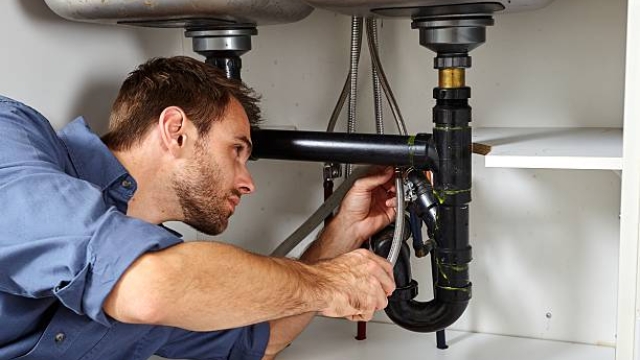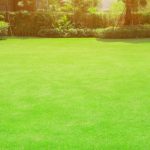Are you tired of dealing with leaky faucets, clogged drains, and mysterious plumbing sounds? Plumbing issues can be a major headache for any homeowner, but fear not! In this comprehensive guide, we will unveil the secrets to mastering plumbing and achieving a well-functioning home. Whether you’re a beginner or have some DIY plumbing skills under your belt, this article is designed to provide you with the essential knowledge and practical tips you need to tackle common plumbing problems with confidence.
When it comes to plumbing, understanding the fundamentals is key. From the water supply to the drainage system, every component plays a crucial role in ensuring a smooth functioning household. Throughout this guide, we will explore the different aspects of plumbing, including the piping system, fixtures, and appliances, and delve into the intricacies of their installation and maintenance. By the end, you’ll have the confidence to handle basic plumbing tasks and know when it’s time to call in the professionals.
So, whether you’re planning a bathroom renovation, need to fix a dripping faucet, or simply want to expand your knowledge on all things plumbing, sit back, relax, and get ready to unveil the secrets to a well-functioning home. Let’s dive in and begin our journey to mastering plumbing!
Understanding Your Home’s Plumbing System
A well-functioning plumbing system is essential for the smooth operation of any home. Understanding how your home’s plumbing system works can help you identify and address any potential issues before they become major headaches.
The plumbing system in your home consists of a network of pipes that carry water to various fixtures and appliances, such as sinks, toilets, showers, and washing machines. These pipes are typically made of materials like copper, PVC, or galvanized steel, which are durable and corrosion-resistant.
Water enters your home through a main water supply line, usually connected to a municipal water source or a private well. This water supply is then distributed throughout your home via a series of pipes. The water pressure is regulated by valves and pressure regulators to ensure steady flow and prevent any damage to the pipes.
Toilets and sinks have drain lines that carry waste water away from your home. These drain lines are connected to a larger drain pipe, known as the main sewer line, which carries the waste water to the municipal sewer system or septic tank.
It’s important to be aware of the location of shut-off valves for both your water supply and individual fixtures. In the event of a plumbing emergency, such as a burst pipe or a leaky faucet, shutting off the water supply can prevent further damage and allow you to make necessary repairs.
By familiarizing yourself with your home’s plumbing system, you can be better equipped to handle minor plumbing issues and make informed decisions about maintenance and repairs. In the next sections, we will delve deeper into the various components and maintenance tips to help you master the art of plumbing and ensure a well-functioning home.
Common Plumbing Issues and Troubleshooting
In any home, plumbing issues can arise from time to time, causing inconvenience and frustration. Being able to identify and troubleshoot common plumbing problems can save you time, money, and unnecessary stress. Here are some of the typical issues you may encounter and how to tackle them:
-
Leaky Faucets: One of the most common plumbing issues is a leaky faucet. If you notice a constant drip, it’s essential to address it promptly. Start by turning off the water supply to the faucet. Next, disassemble the faucet handle using a screwdriver or an appropriate tool. Inspect the O-ring and washer for any wear or damage. Replace them if necessary. Reassemble the faucet and turn on the water supply to check for any remaining leaks.
-
Clogged Drains: Dealing with a clogged drain can be a bothersome experience. To unclog a drain, start by using a plunger. Place the plunger firmly over the drain and create a strong seal. Push and pull the plunger vigorously to create suction, which can dislodge the clog. Alternatively, you can use a drain snake or a wire hanger to remove the blockage. If these methods fail, consider using a chemical drain cleaner, following the product instructions carefully.
-
Running Toilets: A running toilet can waste a significant amount of water and lead to higher utility bills. To troubleshoot this issue, start by checking the flapper valve. Lift the toilet tank lid and observe if the flapper is properly sealing the flush valve opening. Adjust or replace the flapper if needed. Also, check the fill valve and adjust the water level to the appropriate mark. If the problem persists, it might be wise to consult a professional plumber.
By being equipped with a basic understanding of common plumbing issues and how to tackle them, you can maintain a well-functioning home. Remember, if a particular problem seems beyond your abilities or requires specialized equipment, it’s always best to seek professional assistance to prevent further damage.
Maintenance Tips for a Well-Functioning Plumbing System
-
Regular Inspections: Conducting routine inspections of your plumbing system is essential to maintain its functionality. Check for any signs of leaks, damage, or corrosion in pipes, faucets, and toilets. Look out for water stains or dampness on walls, ceilings, or floors. Addressing these issues promptly can prevent costly repairs in the future.
-
Drain Care: Avoiding clogged drains is crucial for a well-functioning plumbing system. Prevent blockages by being mindful of what goes down your drains. Avoid pouring grease, coffee grounds, or large food scraps into the kitchen sink. Use drain screens in showers and tubs to catch hair and debris. Regularly clean the drains using a mixture of vinegar and baking soda to keep them clear and prevent slow drainage.
-
Water Pressure Maintenance: Maintaining appropriate water pressure is vital for the smooth operation of your plumbing system. High water pressure can strain pipes and cause leaks, while low pressure can result in inefficient water flow. Install a pressure regulator to ensure the water pressure remains within the recommended range. Regularly check and adjust the pressure if required to prevent any damage to your pipes and fixtures.
Remember, following these maintenance tips will help you keep your plumbing system in excellent condition, ensuring a well-functioning home.




